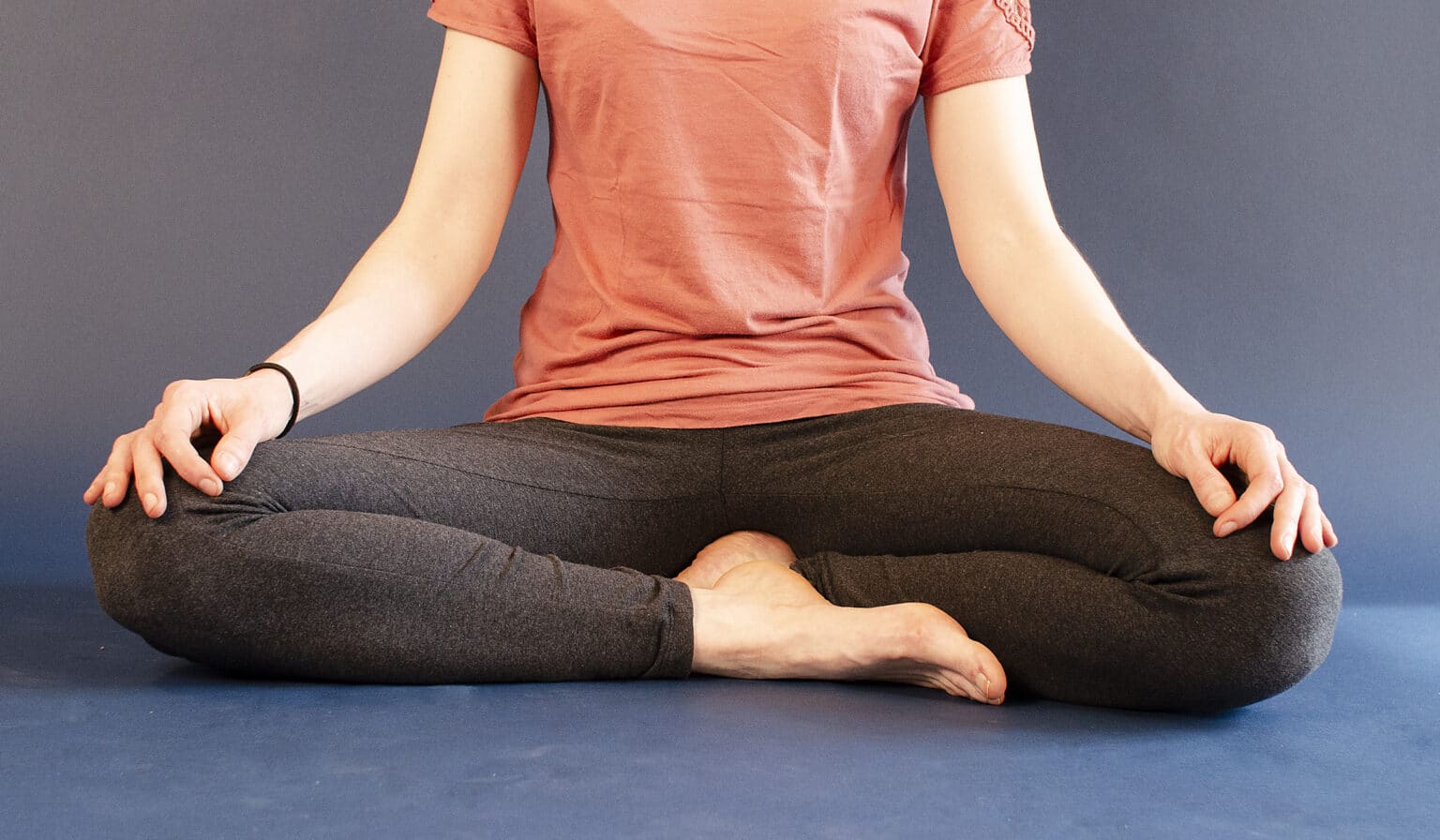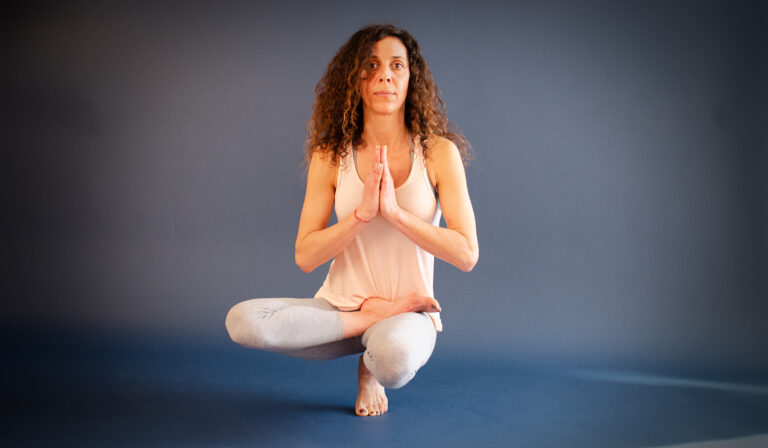If you can’t sit still, your meditation will be frustrating. Every time you move, you will lose the thread, and your mental state will never deepen. Unfortunately, having difficulties staying still is typical for beginners. The good news is that if you are motivated enough, there is a quick way to overcome that restlessness and enjoy calm and fruitful meditations already from the start. In this post, you will learn how to meditate even if you have trouble sitting still.
Is motionlessness necessary for meditation?
According to the pioneering meditation researcher Herbert Benson, you need two things to meditate: a mental device and a passive attitude. A mental device can be the natural breath, a mantra or anything else to focus your attention on. A passive attitude means staying neutral to anything you experience and just observing it without reacting.
Now, if you follow an impulse to adjust your position or to scratch your leg, you will lose the passive attitude. Such an interruption brings you out of the meditative state, and you would need to then work yourself back into it again. If this happens regularly, you will not be meditating at all.
But wait a minute, you might say. Some types of meditation involve movement. That is true, but then the movements are part of the mental device. They are decided on in advance and carried out precisely and consciously.
Not being able to sit still (if that was your intention) is an obstacle you need to overcome. That can be quite a challenge for some beginners. Psychologist Steve Taylor even suggests going for conscious walks as a lighter alternative to meditation for particularly restless people. But what if you need the benefits of actual meditation today?
There is a tried and tested way to meditate even if you think you can’t sit still. It is not a quick fix because you will have to extend your sessions. But by giving yourself the time needed, you can calm down and discover the benefits of meditation already the first time you try it.
But first, a bit about why beginners find it hard to sit still.
Why is it so hard to sit still during meditation?
The urge to move while meditating is because of either restlessness, anxiety or because of physical discomfort. Most of the time, it’s a combination of all.
Physical discomfort is common before the body has become used to sitting in a meditation pose. For most types of meditation, it is OK to sit on a chair. But be warned, even sitting on a chair can be uncomfortable if you stay motionless.
Even advanced meditators can feel discomfort when they practice. And it is perfectly possible to be both anxious and uncomfortable and still meditate. However, if your motivation to maintain that passive attitude isn’t strong enough, you will move. That is typically the case for beginners that have not yet discovered how meditation works.
The after is the before for the next during
In their excellent book Altered Traits, scientific journalist Daniel Goleman and professor of psychology Richard J. Davidson formulate the idéa that “the after is the before for the next during”. They mean that the lasting changes after the end of a meditation session contribute to a more favourable starting point for the next one. As you slowly transform your nervous system by regular meditation practice, meditation becomes more accessible and effortless.
But with the same logic, there is another approach: practising different methods in a long sequence.
Making motionlessness come naturally
What would happen if you meditate right after a session of other more easily accessible mind-body practices? Naturally, the benefits from those practices would spill over onto your meditation. The best way to get that effect is with yoga poses and breathing exercises.
Here is why.
Benefits from yoga poses (asana)
Yoga poses help you to lower muscular tension, release calming endorphins and activate the parasympathetic nervous system. In addition, a complete sequence of poses will give you a full-body stretch which makes it more comfortable to sit in a meditation pose afterwards.
Benefits from breathing exercises (pranayama)
With breathing exercises, especially the alternate breath (nadi shodhana pranayama), you calm down even further while simultaneously boosting concentration. Pranayama acts directly on your nervous system and helps to release deeper mental tensions.
Thanks to yoga poses and breathing exercises, you will be able to stay motionless much longer even if you haven’t been able to sit still before.
Asana and pranayama are gateways to meditation
Using yoga poses and breathing to make meditation easier isn’t a new idea. Many yogic traditions outline progressions that start with coarse physical methods and move gradually to more subtle mental practices.
To have a tangible impact on your meditation, the preparation needs to be long enough. Just five to ten minutes, as some suggest, won’t be enough to create a solid foundation. For an optimal benefit, I advise you to meditate at the end of a full-length yoga session.
The yoga and meditation sessions I teach are typically more than two hours long. That allows for enough time for an entire programme of poses, breathing, relaxation (yoga nidra) and finally meditation.
The yoga that I teach is calm and meditative. However, any type of asana practice will benefit your meditation. If your yoga style is fast and dynamic, it would be a good idea to have some calming poses at the end of your sequence. And keep in mind that you will get the best preparation if you practice consciously and attentively. I think that the pawanamuktasana sequence is handy as meditation preparation for beginners. That is what I use in the entry-level sessions here on Forceful Tranquility.
Time is on your side
It takes about ten minutes for most people to start calming the mind during meditation. If you can’t sit still even for such a short time, you will not get as much benefit as you could.
But when you consciously do your poses and breathing exercises, that is also a sort of meditation. Your mental device is carrying out the instructions for the practices you are doing. Hence, you start deepening your state before the actual meditation even begins. With less restlessness in your body and mind, sitting still will be much more straightforward. As a result, a 15-minute meditation at the end of a two-hour session is worth a lot more. In terms of benefits, you can’t compare it to a meditation without preparation.
Making stressed neophytes sit still
As a yoga and meditation teacher, I love to get a group of total beginners. They will often be quite restless at the start of the session and have trouble being still when asked. I will have to work on making them trust me and the strange exercises I ask them to do. I can often sense their doubt.
However, two hours into the session, much of the resistance is gone. Thanks to the physical yoga exercises, they have already gotten a taste of calm stillness. It is difficult for me not to smile at the end when they all sit perfectly motionless for deep and concentrated meditation.
Key takeaways
- Sitting still is hard for beginners.
- You can learn to sit still with regular meditation practice.
- A quicker way to access immobility is to prepare your meditation with a long yoga session consisting of poses, breathing exercises and possibly additional techniques.




